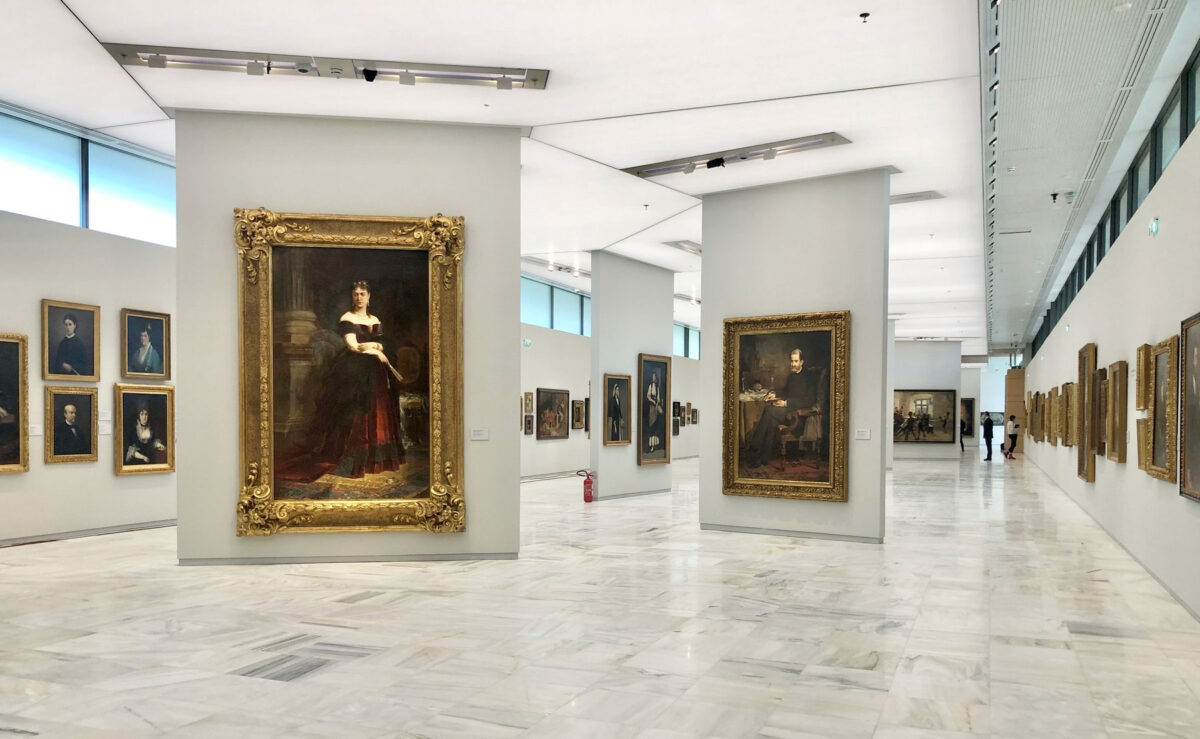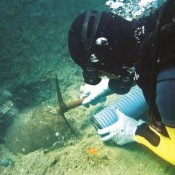New life is being given to the National Gallery by the two-year programme announced last Monday by Syrago Tsiara, laying the foundations for her own vision as an art historian with a rich curatorial practice and director of the National Gallery four months now. The plan and vision, as she said at her first press conference presenting the 2023-2024 programme, “is that the collections and the history of the National Gallery address the current needs of society and contemporary currents, in a more fruitful, more thoughtful way in the search for the portrayal of national identity”. In a few words, she gave “the go ahead signal for a National Gallery belonging to us all” with a cultural and social imprint on the popular National Gallery, since the time of Marina Lambraki-Plaka.
The National Gallery, said Syrago Tsiara, “is at an important moment in its journey, having already achieved key goals. Although understaffed, it has excellent employees, partners and management. It has loyal friends and supporters.”
The 2023-2024 programme proposes group and thematic exhibitions, introduces a public programme of talks and art activities to accompany them each time it plans to support the “slightly forgotten” annexes of the National Gallery, intensifies synergies with public and private bodies, enriches educational programmes for different categories of the public and introduces museum education even to infants (from 18 months to 5 years). Also, until the end of 2023, the permanent collection will be displayed on the third floor, redesigned for a variety of interpretive approaches and rotating every two years.
As for the restaurant of the Art Gallery, it is running on a pilot programme for a month and immediately after that it will open to the public.
In the meantime, the reopening from November 2 of the National Glyptotheque at the Army Park, Goudi, closed for two years due to maintenance work, will be accompanied by the opening of the Western European Art Hall in the new building (level -2) of the National Gallery. The hall opens with 47 paintings from among the 1,250 paintings of foreign schools, donated to the National Gallery. The earliest work, the “Holy Trinity” dates from 1389 and is attributed to Marco Veneziano, and the newest is the “Lunar Landscape” (c. 1966) by Lucio Fontana.
Picasso and the donation by French artists to Greece
Displayed among the 47 works of the exhibition of Western European Art are five of the paintings donated in 1946 by French artists to the Greek people. For a start, the “Head of a Woman” by Picasso is being exhibited for the first time after its theft, with the great painter’s dedication on the back of the painting “for the courage of the Greek people and their fight against fascism”. It is the famous work that was stolen in 2012 and was recovered by the Authorities in 2021, as well as the painting “The Mill” (1905) by the Dutchman Piet Mondrian. Also exhibited from the donation by French artists are: “The Head” by Francis Picabia, “The Beach” by Albert Marche, and the works “Mother and Child in a Red Apron” by Andre Fougeron and “Nude” by Andre Lhote.
Temporary exhibitions
The exhibition “An ideal Greece in the art of Konstantinos Parthenis” will be extended until the beginning of March 2023. It is to be accompanied by a scientific conference on the effect of Theosophism on the Visual Arts, as well as a performance based on a historical text of 1930 by Nikos Yokarinis on the feuds surrounding Konstantinos Parthenis’ artistic approach. In the spring of 2023, an exhibition of Greek artists will be mounted on the theme of “the Urban Experience” in the 1950s-1960s and 1970s in visual arts and cinema, in collaboration with the Film Library of Greece.
Exhibition on Democracy in Southern Europe
In 2024, a major international exhibition on “Democracy” is expected to be inaugurated, on the occasion of the fiftieth anniversary of the restoration of democracy in Greece in 1974. A year that historically coincides with the Carnation Revolution and the restoration of democracy in Portugal as with the Spanish transition to democracy with the death of the dictator Franco in 1975. “At a time of the threatening resurgence of authoritarian forces in Europe and the erosion of democratic achievements, an exhibition about how artists were inspired by the struggles against authoritarian regimes acquires additional importance” emphasized the director of the National Gallery Syrago Tsiara.
Regarding the finances of the National Gallery, the Minister of Culture stated at the press conference that “the co-financed programmes available to us come from the national resources of the Ministry of Culture, the new 2021-2027 NSRF, which will start in the coming months and which the Gallery naturally has the right but also the possibility to claim”. Lina Mendoni thanked Syrago Tsiara “for what she has done in these three and a half months, a difficult period of adjustment, being the successor of a strong personality”. After all, as the minister said, ” this whole project of the Gallery started from Marina Lambraki-Plaka, the director of the National Gallery for three decades, and was based on her to a very large extent as she handed over the renovated Gallery to the next generation”.
For his part, the Deputy Minister of Culture, responsible for Contemporary Culture, Nikolas Giatromanolakis, underlined the common goal of the Ministry and the National Gallery, which is none other than to jointly pick up the threads of continuity of the institution’s history, moving towards a holistic and integrated approach. This, he explained, means care and interventions for the “slightly forgotten”, as he said, annexes of the Gallery and the Sculpture Gallery in Goudi, the educational programmes and the operating regulations of the Gallery which is the “custodian of the visual arts’ history of the country”.





